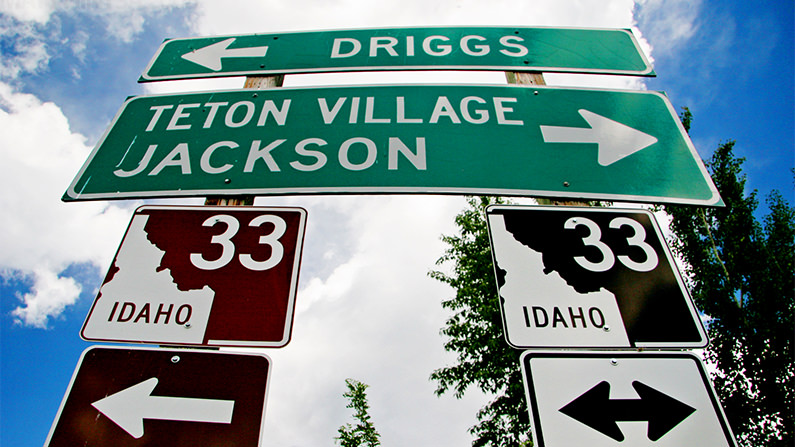A range of community concerns from housing to pollution was brought up recently during the first informal chat with Jackson Town Councilors–a kind of virtual brown bag lunch. But one local resident identified only as Jim boiled down his worries to a single argument.
“Our community is overpopulated,” Jim said. “There are too many people.”
With gridlocked traffic, packed trailheads, overwhelmed restaurants and a housing shortage, it’s hard not to concede that Jim might have a point. However, Town of Jackson Community Development Director Tyler Sinclair said growth might not be the whole answer.
“I went back and just looked a little bit kind of historically on when our periods of largest growth were happening. And certainly, there’s a couple of different decades, 1970 to 1980 [for example], [when] the town doubled in population,” Sinclair said. “1990 to 2000, the town again roughly doubled in population, so when I look at a 9% growth or a 10% growth in the Town of Jackson, over the last decade, there certainly have been periods when the town grew much faster.”
With a growth rate of 9.6% between 2010 and 2020, according to the new batch of Census data published in mid-August, Teton County was tied with Laramie County as the fastest-growing region in Wyoming over the past decade. Lincoln County, home to Alpine, came in third at 8.1%. But overall, Wyoming is growing at one of the slowest rates in the nation—2.3% compared to the national rate of 7.4%.
In Jackson, Sinclair said he thinks massive tourist numbers and redevelopment could be contributing to greater perceptions of change than the data actually shows.
“I think a lot of that has to do with, you know, we’re tearing down one house and building another house, but we’re not adding a lot of additional population, although we’re seeing a lot of growth and change and gentrification in the community,” he said.
Part of that feeling of change could also be driven by the continued growth of second homes in the valley, with owners who don’t live here full-time. The most recent American Community Survey data estimated Jackson’s vacancy rate at 21% in 2019, compared to about 17% statewide. That figure is even higher in Driggs, Idaho, where the estimated vacancy rate has more than doubled from about 20% in 2014 to 41% in 2019. The margin of error is rather high for the Driggs data, at 10%, but Mayor Hyrum Johnson said it’s one of the groups he’s most worried was undercounted last year.
“We are guessing that those who count themselves as second homeowners but actually converted to primary homeowners during the pandemic and for the foreseeable future, they were certainly not accurately represented,” Johnson said. “And I can speak from personal experience. One of my neighbors fits in that category.”
Another group Johnson is guessing was undercounted is Teton Valley’s Hispanic and Latino community. That’s a fear echoed by many government leaders and activists across the country following the Trump administration’s failed attempt to add a citizenship question to the 2020 Census. The official count was also cut short by a month under President Trump, and even the Census Bureau has cautioned against comparing 2020 data to that of 2010 because of changes to how some demographic information was recorded.
“We know some of what we don’t know, but we don’t know all of what we don’t know,” Johnson summarized.
Teton County, Idaho, officially grew by 14.4% over the past decade, putting it just behind the 10 fastest-growing counties in what is now the second-fastest growing state in the country. And while Driggs technically remains a small town, with a new population estimate of 1,984, it faces many of the same challenges as Jackson in terms of needing to serve a much larger population.
“We have to serve not only those 1,900 people, but also the many people who are commuting into Driggs for their jobs every day,” Johnson said. “We have to support the rest of the county as the county seat, as the central economic hub where grocery stores, doctors’ offices, dentists, law offices, you name it—those are primarily located here in Driggs.”
Then there’s the community of Alta, Wyoming, which is geographically isolated from the rest of Teton County, Wyoming, plus growing tourism.
“[When] we look at the sheer number of bodies that arrive here in town to visit our little piece of paradise here—it may be five, 10 times that or more on any given summer day,” Johnson said. “So, Driggs has to look and act like a bigger city.”
Both Johnson and Sinclair said accurate Census counts are critical for local municipalities in order to secure accurate funding allocations. Census data also informs redistricting processes, which are now kicking off in both Wyoming and Idaho and which will define political representation in the two states for the next 10 years. More user-friendly redistricting data and detailed demographic breakdowns are expected to be released by the Census Bureau by Sept. 30.





